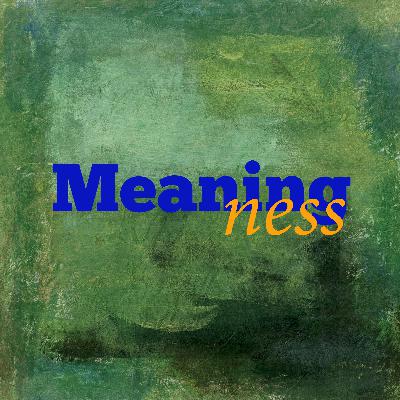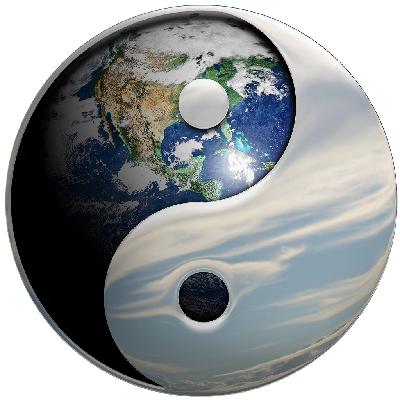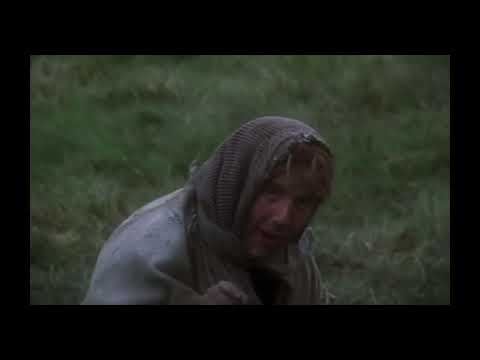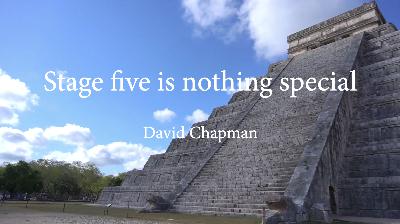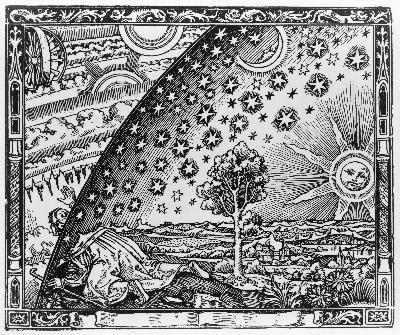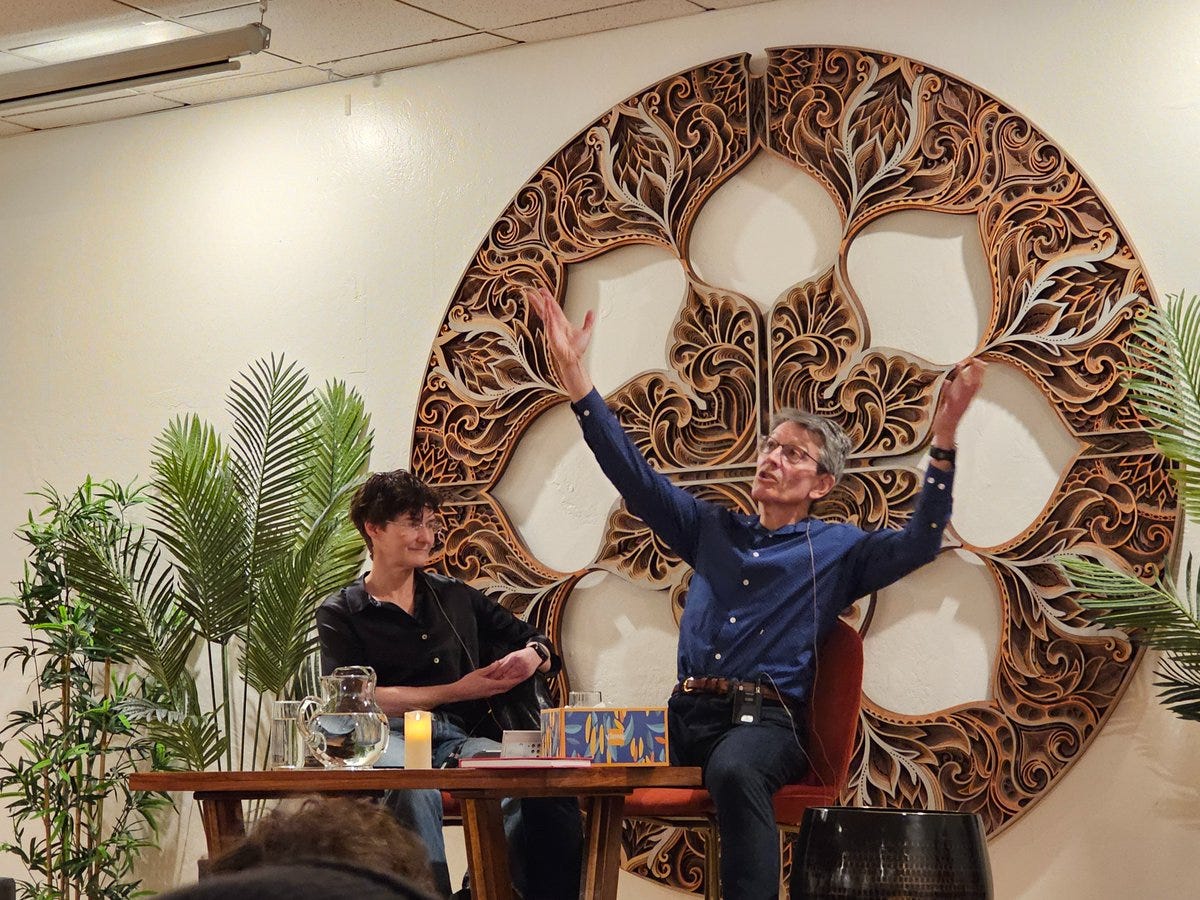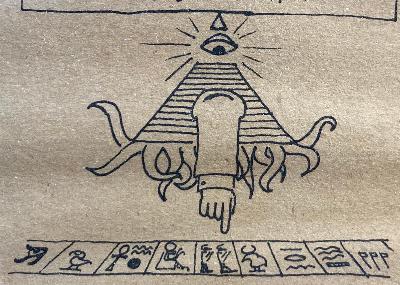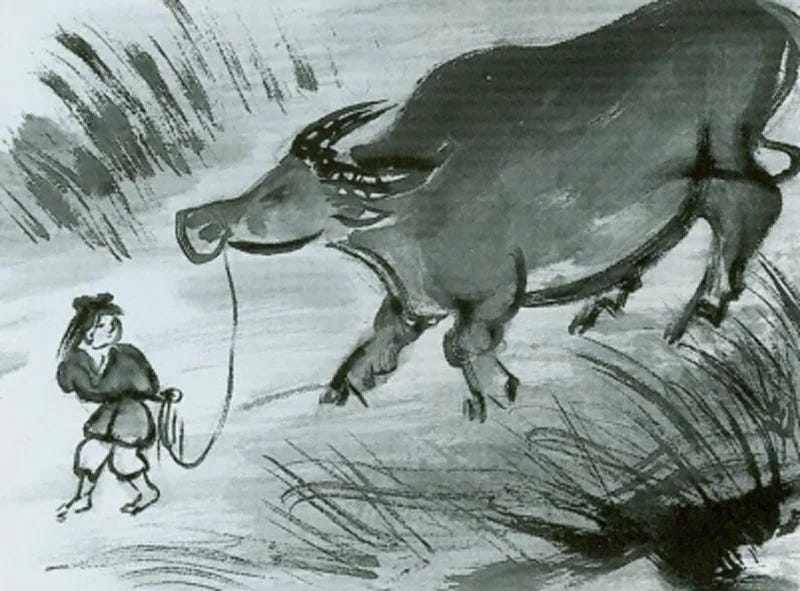What is stage five (like)?
Description
A visual, kinesthetic, embodied experience 𐡸 A fish-eye lens and a magnifying glass 𐡸 The little clicker wheel 𐡸 Nurturing a plot of woodland 𐡸 Becoming the space, unstuck in time 𐡸 Freed up to play
Like most of my posts, this one is free. I do paywall some as a reminder that I deeply appreciate paying subscribers—some new each week—for your encouragement and support.
Transcript
What is the right question?
“Stage five” is a concept in adult developmental stage theory. That is—or used to be—a branch of academic psychological research. I think it may be very important. But stage five is somewhat mysterious. It’s not clear what it is.
Before asking “what is stage five?”, there’s several other questions one ought to ask. Starting with: “IS stage five?” I mean, is this even a thing? Or is it just some sort of psychobabble woo? Why should we believe in this?
And then, what sort of thing is stage five, if it’s a thing at all? What is a stage, actually? How do we know whether something is a stage or not? How many are there? Which are they?
These are skeptical questions one ought to ask if you’re interested in adult developmental stage theory. Especially if you use it, or are considering using it.
I’m not going to address them at all now! That’s because the academic literature on this sucks. The answers available are vague, and they’re not well supported by empirical research. So I’m setting all this aside for now—although I plan to come back to it.
An exciting interdisciplinary scene
Instead, I’m going to give several answers to “what is stage five?”, as if this was a clearly meaningful question. I’m going to give several because different theorists describe it in different ways.
That’s because they came to adult developmental stage theory with different intellectual frameworks, from different disciplines. In the 1970s and '80s, there was a really exciting scene, mainly at Harvard, in which researchers from different fields and departments were trading ideas about this.
Their different ideas seemed similar in important ways, but they also had major disagreements, reflecting their different lenses.
So, were they all actually talking about the same thing, like the blind men and the elephant? Or were they actually describing quite different things, all of which they called “stage five” for inadequate reasons? Unfortunately, academic research in this area ended almost completely around 1990, probably for political reasons. And that means that at about the time that they were starting to do really good scientific tests of whose ideas were valid, if anyone’s, the whole thing just ended.
So we don’t know.
I’m mostly going describe my own understanding of stage five. It’s is generally consonant with that of many researchers in the field, but also somewhat eccentrically different. That’s because I came to the scene with different background knowledge than anyone else.
Everyone in the field starts from cognitive developmental psychology, and particularly Jean Piaget’s four-stage theory of children’s cognitive development. His fourth and final stage he called “formal operations.” He thought the essence of that was the use of propositional logic, a simple mathematical system.
Later researchers extended Piaget’s stage four to systematic rational thinking in general.
Piaget explicitly denied that there could be any stage five, because he somehow thought propositional logic was the highest form of cognition.
Starting in the early 1970s, researchers found that here are further, more powerful forms of cognition. They exceed not only propositional logic, but systematic rationality in general. Or, so the researchers thought; and I agree; and that’s what we call “stage five.”
I come to this with backgrounds also in cybernetics, ethnomethodology, existential phenomenology, and Vajrayana Buddhism. And those have shaped—maybe distorted—the way I understand stage five.
* From cybernetics, I understand developmental stages as patterns of interaction of an organism and its environment. The typical framing of cognitive psychology is in terms of representations held in an individual mind; I’m skeptical of those.
* From ethnomethodology, I am skeptical that we even have “individual minds.” Or, at least, I think this is a misleading way of understanding ourselves. Our patterns of interaction are manifestations of our culture and our local social environment. They are not primarily personal.
* From existential phenomenology, I am moved to investigate what being in a stage is like. “Being” is the existential part, and “what is it like” is the phenomenological part. I’m influenced particular by work of Maurice Merleau-Ponty, who emphasized the role of the body, and of active perception, in experience.
* And from Vajrayana Buddhism, I take the habit of seeing all phenomena in terms of the interplay of nebulosity and patterning. Nothing is either entirely definite or entirely arbitrary. We are nebulous and patterned; everything we interact with is nebulous and patterned; the interactions themselves are nebulous and patterned.
Unfortunately, the insights each of these four disciplines are notoriously difficult to express in plain language. Cybernetics communicates in mathematics; ethnomethodology and existential phenomenology use long made-up words and abnormal sentence structures; Vajrayana is transmitted in ritual and poetry, not prose.
I’m going to try to describe stage five as an experienced interaction, as a way of perceiving and acting, rather than theorizing about supposed mental structures, as cognitive psychologists do. I’m going to do my best to speak plainly, but describing the texture of experience is going make me come out, I’m afraid, sounding like a stoned hippie!
After I babble a bit, I’ll summarize briefly some descriptions of stage five from academic cognitive scientists. They may be talking nonsense, but at least they sound sober.
What stage five is like
So what I’m going talk about is a visual, kinesthetic, embodied experience, and that’s especially difficult to talk about. It’s easy to talk about thinking, because that’s already largely in words. And I think a distinctive feature of stage five is that it is not so much about thinking in words.
What I’m going to describe is not a mystical experience, not hallucinating, not a special state of consciousness. It’s really difficult to express what kind of thing it is. What I’m hoping is that you may recognize some of it, remember having been that way. I think these are experiences that anyone can have, “at” any stage, if that’s even a meaningful thing to say. What may be distinctive about stage five is that they become more common, and that you gain more skill in being in these ways.
So the first aspect of what I want to talk about is what I call “the open field of activity.” Imagine that you are in front of, looking out on, a plane; a landscape. And there’s all this stuff happening on this landscape. Like, things are emerging out of the plane, they’re popping out of the ground, and they dance around. They maybe change color, they bump into each other, and then they subside back into the field. These are the “happening things.”
In this quasi-metaphorical description I’m giving, these are not generally physical objects. They are matters that call for care, or that impinge as relevant to your concerns.
Sometimes these seem to be coming at you from all directions, tasks, interruptions, people emoting, public events, and you may feel embattled, and this can be overwhelming. I think this is an experience that everyone has had, this feeling of stuff coming at you, metaphorically. And that can give a sense of what sort of description I’m trying to give.
In a more characteristically stage five experience, you have panoramic vision over the whole field of activity. Your view is from outside, and above. At the same time you can see accurately extremely fine details of these emerging phenomena. It’s like you’re looking through a fish-eye lens and a magnifying glass at the same time. So you see the forest and you see the trees. And you see the leaves on the trees, and the caterpillars walking on the leaves on the trees! So you don’t get lost in the details, and you don’t get lost in space.
Another aspect of this is that you are not detached, you’re engaged. The experience of stage four can be like looking at the world through a heads-up display. So there’s a transparent piece of glass that has projected on it engineering diagrams, or an org chart, that is telling you what you are seeing, and categorizing it and representing it. This is the experience of stage four.
At stage five, you can still do that when it’s useful; but more typically, you’re actually looking directly at the world, you’re perceiving without an interposed representation. You can still, when it’s useful, turn the heads-up display on, and use some kind of rational system, some systematic ontology, for perceiving, conceptualizing the world. That can often be very useful; and stage five can do everything that stage four can do.
But you also have, like, a little clicker wheel, so you can choose different heads up displays, different representations of the world in different conceptual schemas. You can use different frameworks for perception, and you can actually look with mul

